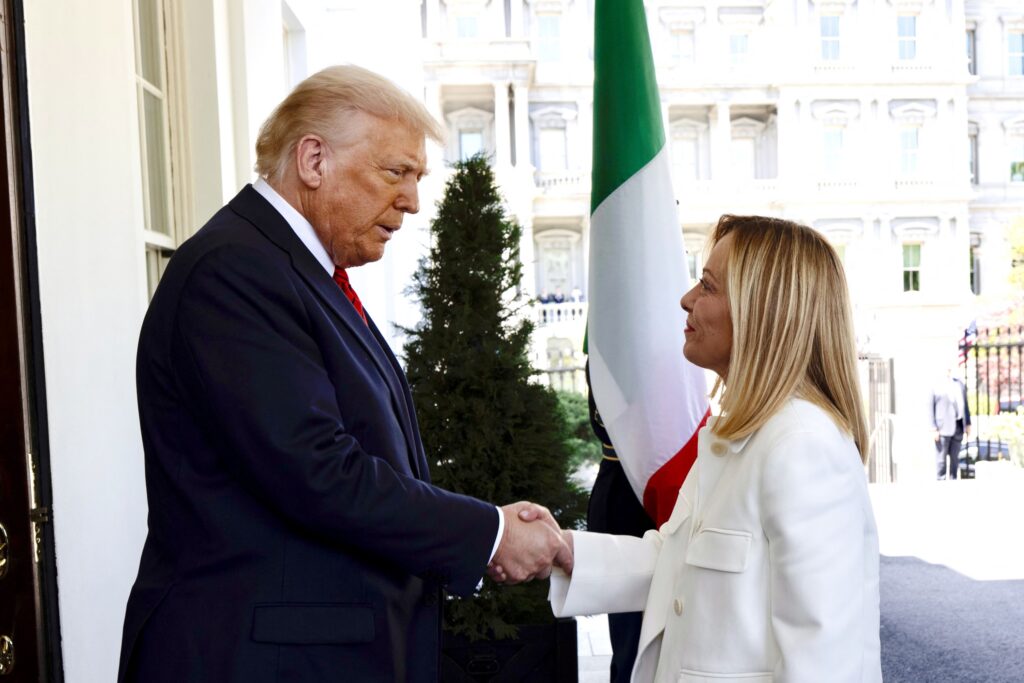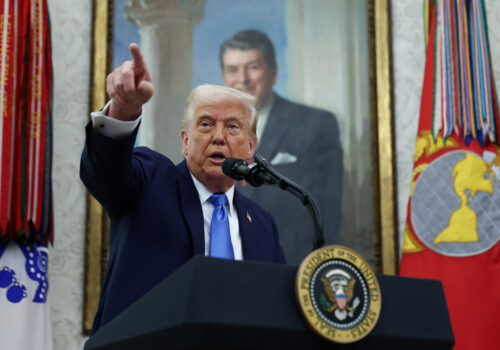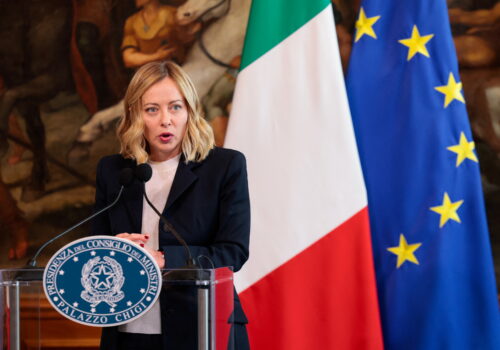US President Donald Trump has revived the discussion of “greatness,” after decades when the very word was deplored as imperialist. What is it that has made the United States and the West great, and what is needed to renew its greatness now?
Recently, Giorgia Meloni, the Italian prime minister, has become a co-leader on this revival. At her meeting with Trump on April 18, she explained that making America great again is complemented and reinforced by “making the West great again.” In response, Trump agreed that they can together make the West great again. Six months earlier, she had told the Atlantic Council that a joint Western nationalism, or “civilizational nationalism,” is needed. This is something, it is worth noting, that would exist alongside the individual nationalisms of each Western nation, and it would reinforce and stabilize them all.
She is right. Pride in the civilization reinforces pride in the nation and stabilizes it. US identity has long been bound up in the shared identity of the West. Similarly, on the practical level, US greatness is inextricably tied to the unity and success of the transatlantic Western community. Westerners are bound by shared historical and civilizational roots, intermixed populations, intertwined development of their systems of government, deep economic links, and enduring shared strategic interests.
American Greatness itself has multiple levels. It did since the start, as the greatness of the states depended on the greatness of the union. This has been taken for granted for so long that it is often forgotten.
Today, American Greatness in the world consists of at least three concentric spheres:
- Great America: the fifty states that make up the United States.
- Greater America: the special arrangements and concessions that the United States gained in the late 1800s and early 1900s in its larger neighborhood. This included territories such as Guam and, before they became states, Alaska and Hawaii. It also included US control of the Panama Canal Zone.
- Greatest America, which is also the Greater West. This is the vast intercontinental alliance system that the United States helped develop during the two world wars and organized permanently under US leadership after 1945. This includes much of Europe, Canada, Australia, and Japan.
Greatest America is by far the greatest power in the world. It has double the gross domestic product of its inner US core alone, triple the population, and four times the strategic area and resources. And, uniquely, it keeps growing. This is the West that Meloni spoke about. Its organizers in the 1940s did not shy away from greatness. They built a new, supplementary level for it. And they fostered a budding joint patriotism for this greater whole.
America’s larger greatness had begun, paradoxically, before the United States existed—when Europe expanded across the Atlantic after 1492. It thereby formed a Greater Europe—a Greater West than ever existed before. When America extended its power back across Europe after 1900, it upgraded this Greater West in a new form. For the first time since the Roman Empire, this began to produce a unified West.
The formal organization of the West after 1945 made it more powerful still. It ended the internecine wars with which the West had undermined itself for centuries. And it enabled the West to expand beyond its traditional geography: It brought Japan and its neighbors into the system.
This achievement deserves more attention. It is what has enabled the European and American powers to establish a positive sum sphere of mutual greatness, with the United States as its essential inspiration and organizing force.
For decades, this arrangement has kept Westerners relatively safe—safer than any time since 1900, when the British Navy was still informally protecting the United States. In recent years, however, too many people have begun to take this greatness for granted.
Since the combined West isn’t nearly as effectively organized as the fifty US states, Trump has raised the issue of relying more on the latter kind of reliability. He has evoked the territorial expansions of the United States in the late 1800s and early 1900s, raising the issue of adding today control of Greenland and Canada, and a renewed control of Panama. In taking this approach, Trump would be reinforcing the middle layer of Greater America after a century of focus on the outer layer, the intercontinental Greatest America.
This has aroused strong nationalistic reactions from the target areas, making it harder to achieve the desired practical accommodations with them. This was just seen in the Canadian elections, where Trump’s approach induced a nationalist reaction against the United States so intense that it reversed the expected outcome. In retrospect, given international laws and long-entrenched nationalisms, a better approach would be to seek supplements and reinforcements within the outer intercontinental layer of American greatness. This can still be done for Panama and Greenland, and probably in the larger Atlantic-Pacific spaces as well.
While these issues seem new at this moment, they are not. There were the same angry arguments in the course of the earlier expansions of the inner United States, the Greater America, and the Greatest America/Greater West. Collapse of the united Great America was regularly predicted for ninety years after its founding, until around 1865. Collapse of the united Greatest America/Greater West has also been regularly predicted for the past seventy years now. But, even after the worst spats, the Greater West has always come out even bigger and stronger.
Today, the prophets of doom for the West are chiming in again. They always do. In the 1890s, many people treated the United States’ trans-Pacific power and expansion as a turn away from its transatlantic connections. Some commentators are repeating this mistake today. But the United States’ truly great nationalists, US President Theodore Roosevelt and US naval historian Alfred Mahan, saw the United States’ trans-Pacific extensions as enabling its transatlantic reconnection with the British Empire and the other northwestern European empires. They proved right.
The prophecies of doom have always failed. Americans and their allies in the Greater West have too much in common to break up—and too much to gain by continuing to grow together. Most of them know this and are determined to stay united.
Today, there are tensions with change, as always; but the likely outcome, ultimately, is a reinforcement of American and Western greatness in all its layers. There are already reparative and further expansive forces at work. The Trump-Meloni challenge wakes us up to get past our recent inertia and make sure it happens.
Ira Straus is a senior advisor at the Atlantic Council’s Scowcroft Center for Strategy and Security.
Further reading
Mon, Mar 31, 2025
‘What you’re witnessing is a revolution.’ Making sense of Trump’s head-spinning moves.
Inflection Points By Frederick Kempe
As the past week made clear, the Trump administration is pushing ahead with what it sees as a revolution in the US approach to the world.
Tue, Apr 15, 2025
Meloni, Trump, and a test of transatlantic resolve
New Atlanticist By Nicholas O’Connell, Jacopo Pastorelli
The Italian prime minister has a unique opportunity to serve as a conduit between a strained European Union and a transactional US administration.
Sun, Apr 20, 2025
Inside the IMF-World Bank Spring Meetings as leaders navigate the global trade war
New Atlanticist By
Amid an economic climate of great uncertainty, we dispatched our experts to the center of the action in Foggy Bottom to share their biggest takeaways from a pivotal week for the global economy.
Image: Italian prime Minister Giorgia Meloni meets with the President of the United States of America, Donald J. Trump at the White House in Washington, USA on April 17, 2025. Photo by ABACAPRESS.COM via REUTERS




